A cat in pain's position might look oddly cute until you realize something's wrong. Maybe it's the tucked legs, the tight tail, or the vacant stare that gives it away.
Feline divas don't cry for help. They speak with their bodies and facial expressions. One strange pose could be a subtle sign, so you'd better learn to read those fuzzy red flags before things take a turn for the worse.
What Are Cat Pain Positions?

Cat pain positions are specific postures that show your feline pet might be hurting. These include crouching low, curling tightly, and sitting stiffly. Subtle shifts matter. Changes in head position, tail placement, and leg movement can all signal pain. Learning these signs helps you catch problems early, even when your kitty stays quiet.
Why Cats Hide Their Pain Instinctively
Felines hide pain to protect themselves. In the wild, showing weakness makes them a target. That instinct hasn't gone away. So instead of whining, they get quiet, stiff, and still.
Your cat's behavior might shift when they're experiencing pain. They may start hiding, sleeping more, and avoiding the usual family interactions. They won't ask for help, so you need to stay vigilant.
Common Cat Positions in Pain
You might see your aching kitty crouched low, with their legs tucked tightly under their body. Sometimes, they keep their tail low and hold their head down and still. These positions reduce movement, helping conserve energy. They also make it easier to guard any painful body parts.
The Crouched Tense Posture

This stance often points to painful limbs. The body looks tight and stiff, with legs pulled close and muscles ready to spring. Tail position stays low and tucked in. Your kitty may stay like this for long periods, avoiding movement to reduce soreness.
Tail Tucked Closely to the Body
This position often means your cat feels vulnerable and sore. Tucking the tail helps protect sensitive areas and signals emotional or physical upset. Watching for this subtle cue alongside other behavioral signs can help you catch issues early and provide comfort.
Head Pressing Against Walls or Furniture

This behavior might point to head pain or neurological issues. It's different from normal rubbing and scratching. If your cat stays still with their head pressed for long periods, don't ignore it. It's a clear sign of pain that demands veterinary care.
Arched Back or Tucked-in Limbs

This posture helps protect a painful abdomen or aching joints by keeping movement minimal and expending less energy. Cats hold themselves this way to guard tender spots. If you notice your feline friend sitting stiffly like this, it's a strong hint they could be dealing with joint issues, like arthritis in older cats.
Reluctance To Lie Down or Constant Shifting
This behavior shows they're struggling to find a comfortable position that doesn't cause aches. If your cat moves restlessly or stands when they'd normally nap, it's a red flag. This constant shifting helps them ease muscle tension but also signals ongoing soreness that needs attention.
Lying Flat With Chin Resting on the Ground

Unlike relaxed sleeping, this pose looks heavy and still, suggesting low energy and possible abdominal pain or illness. Your cat might stay this way, facing forward, to conserve strength while hiding how bad they feel. It's a subtle but serious sign worth looking into.
Hunched Over While Sitting or Standing

This stiff stance protects sensitive areas and shows your cat is not feeling well. They may look frozen, tense, and reluctant to move. If you spot this, monitor closely and consider seeking veterinary care to address whatever's causing the discomfort.
Resting With Eyes Half-Closed or Darting Sideways
This subtle behavior shows your cat isn't fully at ease. Pain and irritation can make deep sleep tough, so your kitty stays alert even while resting. Noticing these small eye movements alongside unusual postures helps you spot when your companion might be hurting.
Related Post: Cat Ear Position Meaning: See How Cats' Ears Communicate
Signs That Often Accompany a Cat in Pain Posture
Aside from posture, felines show other signals, too. These behavioral signs help paint a clearer picture of their discomfort:
- Vocalization, Hissing, or Growling. Unusual sounds mean your cat is uncomfortable.
- Hiding, Avoidance, or Aggression. Most cats pull back to seek comfort, while others act out (bite and scratch) when feeling vulnerable.
- Labored Breathing or Rapid Heart Rate. Physical stress often comes with pain.
- Squinting or Dilated Pupils. Aching felines may narrow their eyes or have unusually large pupils, even in bright light.
- Reduced Appetite or Refusing Food. Pain can lower interest in meals.
- Excessive Licking or Grooming in One Spot. This hints at localized irritation.
- Reduced Grooming. A painful cat might skip cleaning themself.
- Mobility Issues, Stiffness, or Limping. Trouble moving shows joint and muscle aches.
- Litter Box Changes. Pain may affect bathroom habits.
Cat in Pain Posture vs. Normal Sleeping Positions
A cat's normal sleeping position looks relaxed and loose. They might stretch out, curl up with their paws tucked, or sprawl on their side with soft muscles. These poses show comfort and ease.
A cat in pain looks stiff and guarded. Their limbs may be tightly pulled in, tail low, and body hunched. These positions protect tender spots and reduce movement to help ease discomfort.
Natural Ways To Help Ease Cat Discomfort at Home

Provide cozy, soft spots where your cat can rest without pressure on those sore areas. Keep their environment calm and stress-free to help reduce agitation.
Calming solutions like CBD (cannabidiol) offer gentle support for pain management and overall comfort. And guess what? HolistaPet's CBD for felines (treats, chews, oils, and capsules) could be your road to having an ache-free cat. All natural, vegan-friendly, vet-approved, and third-party lab-tested, this is one choice you won't ever regret.
When To Take Action: Signs Your Cat Needs a Vet Visit
If your cat's posture stays stiff or they start hiding more than usual, it's time to act. Look for other signs like sudden loss of appetite, heavy breathing, and constant vocalization. Persistent painful behaviors, changes in grooming, and difficulty moving also mean it's best to seek veterinary care. Don’t wait for things to worsen.
How To Talk to Your Vet About Your Cat's Pain
Describe exactly what you've seen in your pet's posture and behavior. Mention any changes in grooming habits, activity level, and eating patterns. Point out specific painful positions and other warning signs, like excessive vocalization and hiding. Clear details help the vet understand your cat's pain level and recommend the best care plan quickly.
Preventive Wellness: Keeping Your Cat Comfortable Long-Term
Regular vet checkups help catch early signs of joint swelling and discomfort. At home, provide a soft bed and easy access to litter boxes. Also, keep your cat active with gentle play. Maintaining a healthy weight can help reduce stress on their joints. These steps support long-term comfort and keep your buddy feeling their best.
FAQ – People Also Ask About Cat Pain Positions
Cats show pain in subtle ways, and many pet parents want quick answers. This section covers common questions about how to spot, understand, and respond to feline pets in pain. Let's jump right in.
What is the most common cat in pain posture?
The most common cat pain posture is a crouched, tense position with the legs tucked under the body. You might notice a lowered head, a tail wrapped close, and stiff muscles. Felines hold this tight pose to protect sore spots and reduce movement, managing discomfort quietly while still staying alert to their surroundings. It's often the first clear sign something's wrong.
What is the best indicator that a cat is in pain?
The best indicator of pain in cats is a change in their usual posture combined with behavioral signs. Look for stiff bodies, tucked limbs, and a low or tightly wrapped tail. Other clues include decreased appetite, hiding, and excessive grooming of one area. These signs together give a clearer picture than posture alone.
Can I give my cat pain meds at home?
You should never give your cat pain meds without consulting a vet first. Many human pain relievers can be harmful to felines. If your pet shows signs of discomfort, a veterinarian can recommend safe and effective treatments. Always follow their advice to avoid worsening the problem.
Can CBD help a cat in pain?
Yes, CBD may support discomfort management and calming nervous behaviors. It works by interacting with the cat's endocannabinoid system (ECS), which helps regulate mood, pain response, and overall balance. This makes CBD a gentle way to boost comfort without harsh side effects.
HolistaPet offers high-quality CBD products designed just for cats. They work as a natural addition to your feline friend's wellness routine, helping them stay relaxed and move more easily.







![Probiotics For Dogs [Soft Chews] - HolistaPet](http://www.holistapet.com/cdn/shop/files/Probiotic-Infographic-1_472d7a29-e30c-435a-9638-1365d8c3a9f9.jpg?v=1725384841&width=104)









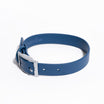
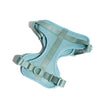
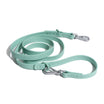
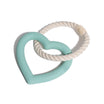
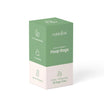
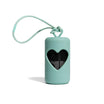

 CBD Oil for Cats - Fast Acting
CBD Oil for Cats - Fast Acting
 CBD Cat Treats - Easy Dose
CBD Cat Treats - Easy Dose
 CBD Calming Chews for Cats - Highly Rated
CBD Calming Chews for Cats - Highly Rated
 CBG Oil for Dogs and Cats - Loved by Thousands
CBG Oil for Dogs and Cats - Loved by Thousands


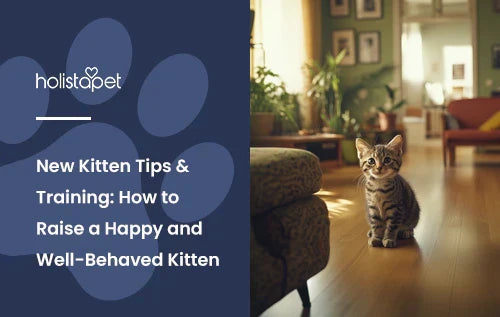
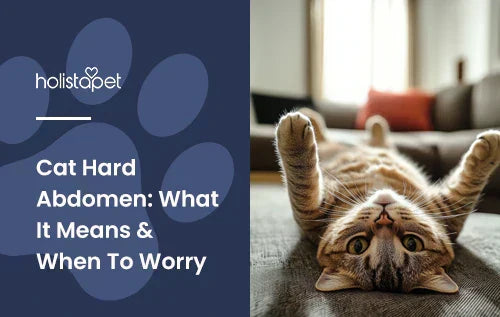

1 comment
Linda Babashoff
I’ve tried everything with my female cat who used to tolerate the other 3cats and now she just growels at them if they come near her or walk by and she’s been biting me randomly like if I pet her but then she will come lay on me for a bit then leave but she’s making all the other cats anxious and scared and nothing works
Leave a comment
All comments are moderated before being published.
This site is protected by hCaptcha and the hCaptcha Privacy Policy and Terms of Service apply.